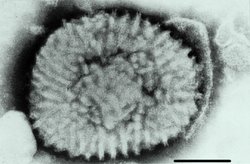Most of what can go wrong with cows can be found in one of four categories of illness. What many people don't realize is the same illnesses can spread to humans.
Bacterial diseases that can affect humans are: anthrax, brucellosis, clostndial disease, leptospirosis. salmonellosis and tuberculosis. Government-regulated management programs, including quarantine, slaughter, restricting movement and specific vaccination programs, have helped with control.
Diseases such as brucellosis and tuberculosis have been almost wiped out because of excellent herdmanagement and isolation techniques. Salmonellosis is a disease for which we tend to vaccinate within a herd after an outbreak has occurred.
Anthrax lies dormant in the soil, and although rare, we still have periodic outbreaks m the United State
A vaccine is available for about St per head. It usually is given only when there is a need.
Fungal diseases include ringworm. Parasiticides do a good job of helping prevent some carriers of the fungus, such as lice or biting flies. Treatments for the ringworm itself include iodine, chlorhexidme and captan.
Parisitic diseases are sarcosporidiosis. flukes and tapeworm. As with fungal diseases, these are routinely manaqed by parasiticides.
Viral diseases include cowpox and pseudo cowpox. hemorrnagic tever and foot-and-mouth disease. These viruses are economically devastating diseases for which we do not regularly vaccinate because there has not been a recent infection in the United States. However, we do have and regularly use the vaccines for clostndial disease and leptospirosis.
Copyright Southern Progress Corporation Nov 2005
Provided by ProQuest Information and Learning Company. All rights Reserved



